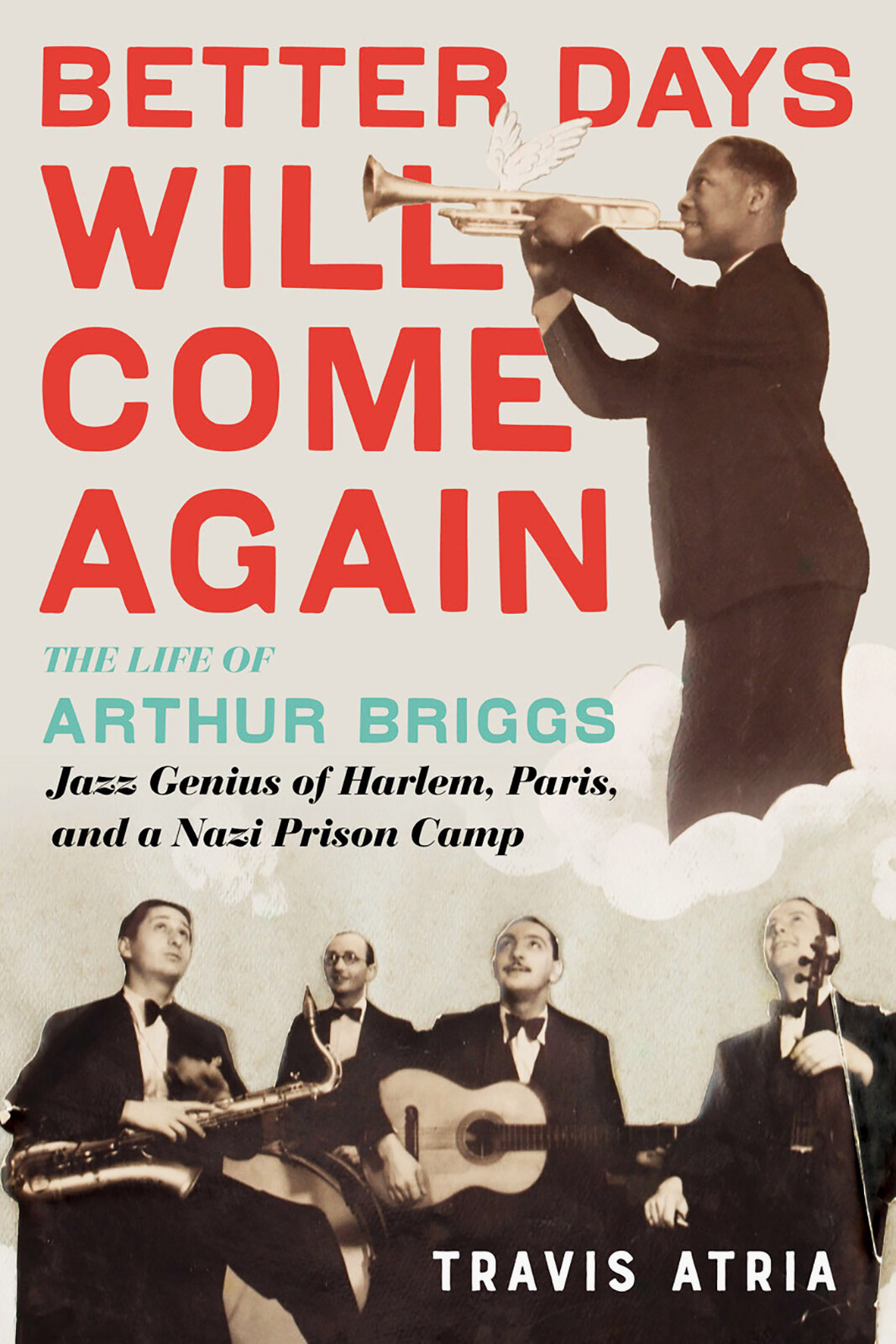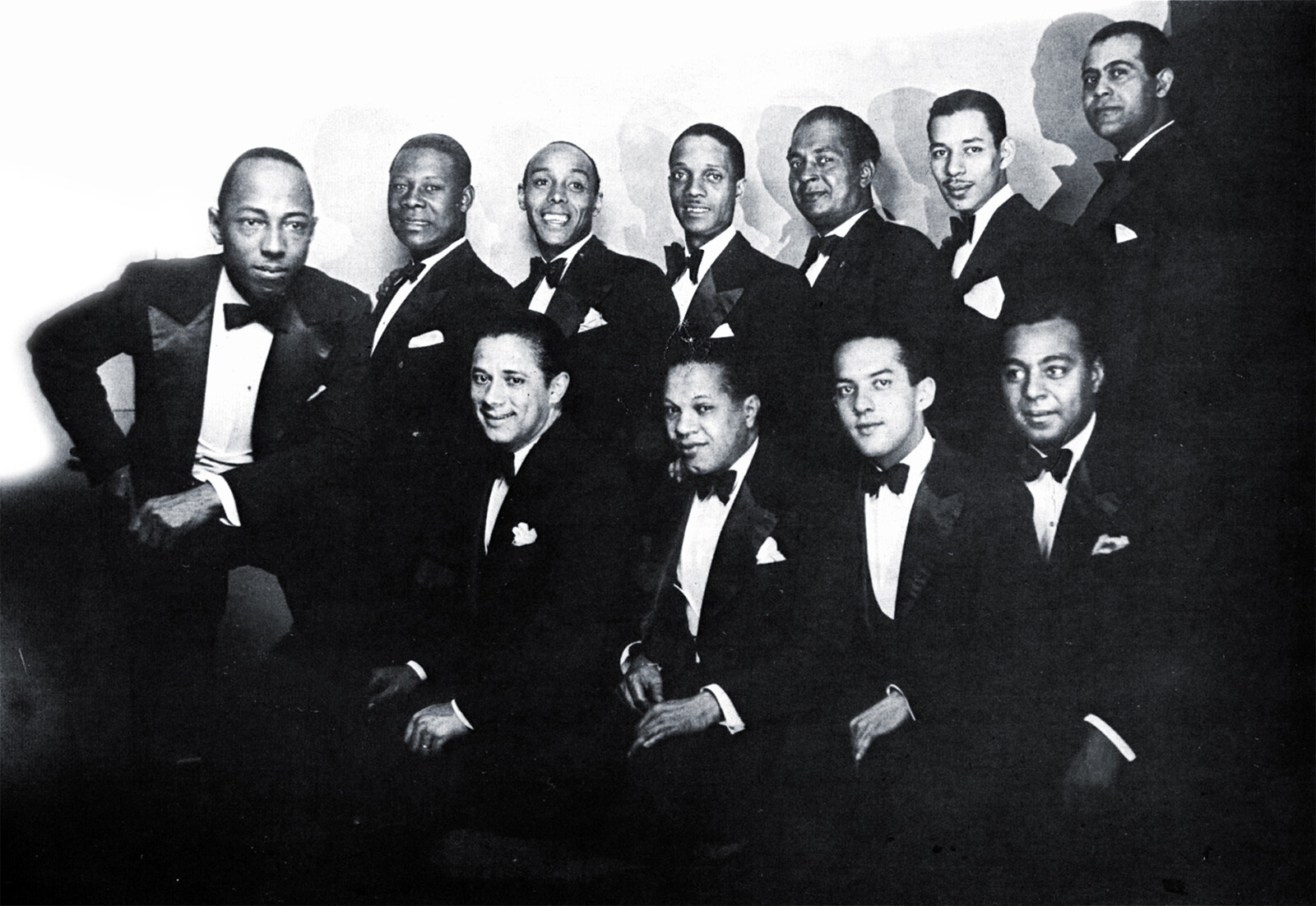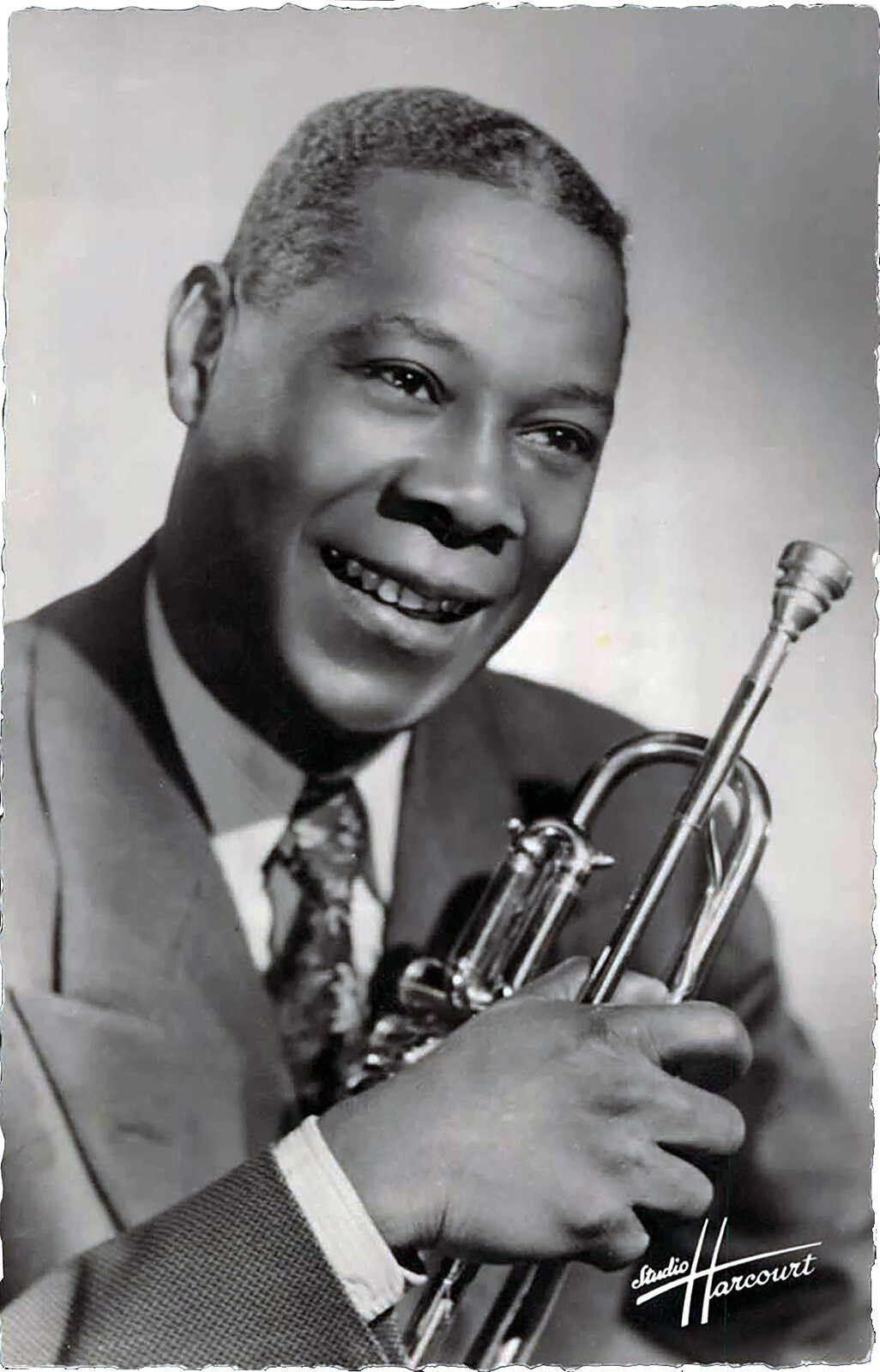
Arthur Briggs (1901-1991) was considered the premier Jazz trumpet player of Europe between the two world wars. Living in France continuously after 1931, he deserved his sobriquet “the Louis Armstrong of France.”
A Colorful Tale
This is the most exciting and readable new Jazz title in some time, a lilting saga of early Jazz culture and performance in Chicago, Harlem, London, Paris, Berlin and beyond. Written with a novelistic flow, it smoothly traces the arc of Briggs’ stupendous life and career, deftly placing him in both the evolutionary hothouse of early Jazz and the broader context of social history and world events.
Travis Atria is a fresh name in music scholarship, showing great promise. Having previously only co-written a biography of Curtis Mayfield, his insights and comprehensive research bring into focus the evolution of jazz trumpet and Briggs’ growing understanding of his art. I enjoyed the excellent narration in the audiobook format.
Briggs was born on the Caribbean island of Grenada, a fact he concealed most of his life. Migrating to the United States at age 16, he witnessed and participated in the emergence of Jazz in Chicago, Harlem and the black vaudeville halls of New York City. He was one of the first skilled jazz trumpeters to head for Europe — a handsome musician and strapping young man migrating through the wildest environs of the Jazz Age.
[Editor’s note: Arthur Briggs’ likely reason for “concealing” his origin was that European audiences expected black jazz musicians to be from the United States. Being perceived as an American may also have awarded him physical safety in Occupied France during WWII.]
His close associates were among the most colorful and influential characters of early Jazz: bandleaders James Reese Europe, Will Marion Cook, Noble Sissle, and Sam Wooding; dancer and singer Josephine Baker; reed wizard Sidney Bechet; gypsy guitarist Django Reinhardt and saxophone master Coleman Hawkins.
Harlem on the Continent
Briggs went to London in 1919 with bandleader Will Marion Cook (1869-1944). Cook was one of the most formidable musicians of the pre-recording era, a bridge from Ragtime to early Swing, and a mentor whom Arthur called “Dad.” Briggs toured Europe with Cook’s Southern Syncopated Orchestra and Sidney Bechet. We witness Bechet purchase his first soprano saxophone. It stumped him initially, so Arthur gave Sidney his first instruction on the instrument.

In the early 1930s, Briggs and piano player Freddy Johnson ran The Harlemites jazz orchestra in Paris. Seated below Briggs in the band photo is Peter Duconge, a close associate of Briggs. A New Orleans-born clarinet player with an illustrious Creole heritage, Duconge married cabaret operator Bricktop and toured Europe with Louis Armstrong. Another Louisiana Creole and Briggs associate was Frank Big Boy Goudie who made his recording debut with this orchestra. The 1933 “Harlem Bound” is possibly the hottest jazz recording made on the Continent before 1940.
Harlem Bound – Johnson-Briggs Harlemites Orchestra (MP3)
The narrative takes us to the heart of Harlem-on-the-Seine at Bricktop’s Cabaret in the Montmartre quarter of Paris. The Prince of Wales, John Steinbeck and a “zozzled” Ernest Hemingway hang out and carry on while Arthur plays background music for the privileged Americans at the club, typified by Zelda and F. Scott Fitzgerald. For songwriter Cole Porter, Briggs premiers “Night and Day.” Then he heads for Berlin at the height of its late-1920s decadence, cutting some 64 sides for the Deutsche Grammophon record label.
Waxed in Paris, the masterful “Japanese Sandman” of 1933 probably replicates the quiet, sophisticated duets he played with Freddy Johnson at Bricktop’s. The spectacular “Braggin’ the Briggs” is a double-sided tour de force for Arthur recorded only months before his arrest in October 1940.
Japanese Sandman Briggs & Johnson duet 1933 (MP3)
Braggin’ the Briggs 1940 (YouTube)
Detained by the Nazis
Briggs’ story reached a dramatic climax when he was detained by the German occupation government of France and sent to Saint-Denis Internment Camp. Designated Stalag 220, located on the grounds of an ancient gothic basilica and fortress six miles from Paris, Saint-Denis contained about 2000 interned citizens of Canada, Australia and New Zealand, downed English pilots and miscellaneous detained nationals.
Though harsh, Briggs’ confinement was mild by Nazi standards. Red Cross food shipments probably saved him from starvation and his French common-law wife visited, sometimes bringing hot meals. Overcoming severe adversity, they were eventually wed in the camp’s visitor hut.
He was consigned to organizing and conducting music ensembles. These were not like the demonstration orchestras of Terezin or the ghastly caricatures of music ensembles in the death camps. His music was played for the prisoners, and on occasion their captors. The group even received a gift of three new trumpets from the Selmer Horn Company.
With his makeshift orchestra of internees, Briggs transcribed Beethoven’s 5th Symphony, performed Mozart and Handel, Strauss and Smetana, covert American songs and “Night and Day,” the tune he’d introduced a decade earlier at Bricktop’s. Arthur often concluded his prison concerts with a spiritual called, “Better Days Will Come Again.”
Aftermath and Legacy
Through it all Briggs conducted himself with the calm dignity, moral rectitude and total commitment to his craft that he evidenced throughout his momentous life. After the war, the trumpeter returned to performing for a few years but soon fell out of step with Modern Jazz. Retiring from professional music, he focused on teaching music and his family.
Late in life Briggs married a much younger woman, fathering a daughter. Directing his full attention to her upbringing, they were very close. His daughter, Barbara Pierrat-Briggs writes in the preface that Arthur helped her with homework and “knew all my dolls by name.”
Methodology

After Arthur’s passing in 1991, the Briggs family guarded his legacy until finding a writer willing and able to impart the scope, context and heart that an authorized biography merited. In an epilogue, his nephew James Briggs Murray makes the salient point that his uncle’s generation built the main edifice of Jazz before 1940, calling subsequent developments “an addendum – based on foundations laid down by those who’d come before.”
Crucial to this book was Briggs’ unpublished memoir based on oral interviews. Mr. Atria cross-checked and fortified it with a broad spectrum of documentary sources, first-hand accounts, wartime archives, the African American press of the day and the substantial body of literature that now recounts events of Jazz in Europe before the Second World War.
My one reservation regards the amount of space devoted to Josephine Baker’s story. Briggs worked with Baker on numerous occasions, but her career was tertiary to his, aside from launching Le Tumult Noir in Paris. Nonetheless, the author often tarries from Arthur’s tale to keep us abreast of her story, even though admitting that Briggs didn’t even mention Josephine in his memoir and suspecting that Arthur disapproved of her loose morals and questionable financial ethics. Baker’s story is uplifting, but I found her close-up cameos a distraction from the trumpeter’s chronicle.
This new biography makes it clear that Arthur Briggs witnessed and participated in key developments of early Classic Jazz. For two decades he was a driving force in a Golden Age of Jazz, and the best trumpet player of any kind on the European Continent. When confronted by oppression, he demonstrated character, determination and humanity. Congratulations to Mr. Atria for a job well-done and I look forward to his next effort.
Better Days Will Come Again:
The Life of Arthur Briggs – Jazz Genius of
Harlem, Paris and a Nazi Prison Camp
by Travis Atria
Chicago Review Press; $27.99
chicagoreviewpress.com
ISBN 9780914090106
Further Reading (with audio downloads): Arthur Briggs’ Savoy Syncopators Orchestra
Dave Radlauer is a six-time award-winning radio broadcaster presenting early Jazz since 1982. His vast JAZZ RHYTHM website is a compendium of early jazz history and photos with some 500 hours of exclusive music, broadcasts, interviews and audio rarities.
Radlauer is focused on telling the story of San Francisco Bay Area Revival Jazz. Preserving the memory of local legends, he is compiling, digitizing, interpreting and publishing their personal libraries of music, images, papers and ephemera to be conserved in the Dave Radlauer Jazz Collection at the Stanford University Library archives.






















